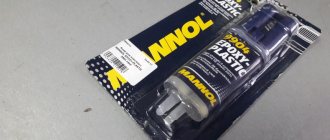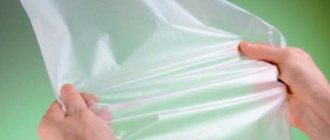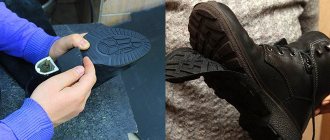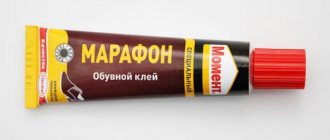We use plastic products every day. It often happens that they break and need to be connected with something, but not every glue can help in this situation. Let's figure out how to repair things made from this material and tell you about the most popular means for gluing parts together. It is also important to pay attention to the types of plastic and glue markings. It is usually with the distinction between these concepts that problems arise for the average user of plastic items.
Determining the type of plastic
In order to reliably glue plastic, you first need to find out what kind of plastic the object is made of. Knowing the plastic, you can choose the most suitable adhesive for it.
All manufacturers put recycling symbols on their plastic products - this is the well-known Recycling Triangle - a triangle with arrows on the sides, symbolizing the reuse of materials.
The triangle contains numbers from one to seven. Often the numbers are supplemented by an abbreviation. These designations are used to determine the type of plastic.
Welding
The principle of the technology is similar to extrusion, but instead of mesh I use plastic rods. To seal the tank, I cut patches from an old water container. Instead of a soldering iron, it is more convenient to work with a professional hot-melt gun. Equipment with a narrow nozzle must support manual temperature adjustment.
I clean the edges of the damage and degrease it. Using a drill, I carefully drill small grooves on the back and inside of the tank. The depth of the ditches is 75% of the thickness of the walls. The holes should be longer than the crack. Then I change the drill to a rusty attachment and make cone-shaped indentations.
I place thin and thick plastic patches in the grooves. In order for the contact to be better, it is necessary to give the elements a cross-section in the shape of a ditch, sharpening the ends. I install the tank at an even angle. On the heat gun I select the range 290-330 C, after heating I start soldering.
Source kraska.guru
When working with the tool, I heat the ends of the rods and carefully guide them along the crack. In order for the patch to accurately fall into the ditch, you need to apply slight pressure while moving. Under the influence of high temperature, a drop of plastic will appear at the contact area, which will begin to flow into the damage and solder the edges. The top layer of material will reliably close the hole.
Welding is a painstaking process, the quality of which depends on the accuracy of the performer. When heating the plastic, you should not rush, otherwise the polymer will not soften easily. On average, one rod takes 3-4 minutes. After the first layer, I use pliers to bite off the excess and move on to the next tier.
The number of patches per crack depends on the size of the damage. I recommend melting 3 more units than will fit in each ditch. The sealed seam will stick out above the surface of the tank. After the weld has hardened, the walls should be treated with a grinding wheel.
What does the marking on plastic mean?
- PET low density polyethylene or polyethylene terephthalate. It is mainly used for packaging or packaging food products. Available in the form of film, bags or transparent containers for liquid and bulk goods, as well as drinks.
- HDPE compacted low pressure polyethylene. Used for the production of shrink film and packaging bags.
- V (PVC) polyvinyl chloride is a non-food plastic used for the manufacture of strong and durable items, such as household buckets, metal-plastic window frames, and linoleum.
- LDPE Low density polyethylene of high pressure. Used in the production of bottles for drinks and dairy products, packaging bags, toys, cold water pipes.
- PP polypropylene. Plastic is not chemically active, heat-resistant (up to 150 °C), and is most widely used in the production of medical goods, heat-resistant dishes and household utensils, toys, pipes and fittings for hot water, and much more.
- PS polystyrene. Also food grade plastic, it is used to make disposable tableware, household utensils, and kitchen appliance housings. If it is foamed, it forms an excellent porous heat insulator - polystyrene foam, used in everyday life and in construction work.
- O Other (others) - materials that are not intended for recycling, for example, with inclusions of metal, paper or other substances). This also includes plastics that do not belong to one of the six groups.
PS - polystyrene
To reliably glue plastic, you need to carefully examine the markings on the product and select an adhesive intended for polymers of this group. There is another way to determine the type of plastic - a small piece of it must be set on fire. Each type burns with a characteristic smell and type of flame. To reliably use this method at home, you need to gain considerable experience.
Extrusion
The technology is suitable for repairing containers with thick walls. Extrusion welding is based on combining raw materials using filler material. As a result, I get a strong, durable seam, almost invisible to the naked eye.
When exposed to high temperatures, even the most resistant plastic melts and deforms. Reinforcement will prevent the appearance of new holes and eliminate damage. As a filler material I use a mesh of:
- stainless steel;
- aluminum;
- copper
Metals should not oxidize when they come into contact with water, so I take options with anti-corrosion properties. Using scissors, I cut out thin strips, 1-2 cm wide. I clean out the cracks in the tank and degrease them. I apply the patch to the edge of the damaged area and seal the tank.
Source cheb.my-teplo.ru
To heat the plastic, you can use either a hair dryer or a household soldering iron. The power of the former must be at least 1.6 kW, of the latter - 100 W. It is more convenient to use a tool with hot blowing, the intensity of which is regulated and there are several types of attachments. When working with tinning equipment, I advise you to take models with a wooden handle.
I use a soldering iron or a hair dryer to burn a piece, pressing the mesh to the plastic and sealing the tank. The material must be completely immersed in the polymer. I fix the tape with a screwdriver or the edge of a knife. Cold metal acts as a heat exchanger, cooling the walls. In order for the mesh to better penetrate the molten raw material, the tool must be guided following the hot blowing.
Source kraska.guru
The melted edges are smoothed using a soldering iron. After the patch sticks, move on to the next section. The work is slow, painstaking and requires attentiveness and accuracy from the performer. A few unsealed millimeters will leak. I recommend carrying out reinforcement on the external and internal sides of the tank, preventing possible rupture.
Glue marking
Tubes with glue are also marked, it’s just a pity that the designation system does not always coincide with the designations in the triangle on the plastic product. Most often you can see the following symbols on the tube:
- PC-polycarbonate (used for covering greenhouses and canopies).
- ABS is an acrylonitrile copolymer.
- PP polypropylene.
- PPMA organic glass for general purpose.
- PE is a well-known polyethylene.
- PVC is another familiar one - vinyl, or polyvinyl chloride.
- PS – polystyrene.
- PA 66 - polyamide.
- PUR polyurethane.
Adhesive for acrylic (plexiglass)
If you are not an expert in organic chemistry, then most likely, further study of labeling at home will not be successful. It is better to read in the user manual, which must be included with the tube, which plastics can be glued with it.
To come in
Already registered? Sign in here.
There are currently 0 users on the page
There are no users viewing this page.
Dear masters, good day!
There is a need to glue a thermoplastic rose to the metal base of the ring. Any glue will not work, as you understand.
Tell me, please, who uses what adhesives for such cases?
There is one more problem - the base for the ring is not smooth, but with a pattern.
Thanks in advance for your answers!
But the almighty Poxypol - no?
Thank you Natasha! I read about Poxipol, it seems like it might be what I need.
Well, it's like a quick-setting epoxy. Used in jewelry. I glue laces into the ends and pearls onto the pin - tightly!
Super Moment Gel universal
any cyanoacrylate glue (I used cosmofen)
and it seems to me that any epoxy
something like that, please correct me if I said something wrong
This question is still interesting to me, because... There is no epoxy, and cosmofen is not available everywhere :))
Gel Moment I'm afraid. I tried gluing silver-plated wire with it, but it turned white all over.
I'll look and read about the rest, thanks!))
I didn’t glue it to precious metals, and nothing happened to me with ordinary metal fittings
there were different colors: copper, silver and yellow
Epoxy resin - 100% reliability.
There is an excellent German glue called U-hu. It glues everything to everything, is divided according to materials (fabric, wood, plastic, rubber, etc.), but there is also a universal one. It has been tested, metal glues to plastic, the mark is transparent, the tubes come in large and miniature. I only work with him.
Oh, I realized that you are talking about plastic, not plastic. I didn’t work with plastic surgery, unfortunately.
Types of adhesives
The variety of plastics used in everyday life corresponds to an equally wide variety of manufactured compositions and methods of their use.
How to glue plastic
To dissolve the surface layer of a material, it is necessary to destroy the chemical bonds between the molecules. For this purpose, special substances are used - strong solvents. Each solvent is suitable for its own group of plastics, and may not even leave a trace on a material from another group. The basis of each adhesive composition is such a solvent. In addition, the composition may include:
- a hardener that promotes drying;
- filler - dissolved molecules of the substance for which the glue is intended.
One of the strongest solvents is dichloroethane. It is used to glue polystyrene and plexiglass.
Dichloroethane
Depending on the method of use, the products are divided into several groups:
- liquid;
- contact;
- reactionary;
- hot melt adhesives.
Liquid
Liquid ones are widely used in everyday life; they are easily and simply used at home for gluing plastic that has a porous structure. They are produced both on the basis of an organic solvent and on a water basis. They are applied to surfaces that are pressed against each other for a time sufficient for the base to evaporate. After this, the adhesive layer hardens, forming a connecting seam. A typical example is PVA glue; it can be used to glue not only linoleum, but also wood at home.
Contact
Bonding takes place in two stages:
- the surfaces to be glued are lubricated with a thin layer, which dissolves the surface layer of plastic, softening it and facilitating contact with another surface;
- After a few minutes, the parts are pressed against each other with force, the softened layers are mixed, the solvent evaporates and a seam is formed.
Moment for plastic
This is how Moment, BF-2 and others work. They can be used to glue polystyrene and other plastics together at home. They contain toxic substances, so you need to work in a well-ventilated area and prevent drops from coming into contact with the skin or mucous membranes.
Reactionary
One-component reactive agents dissolve the bonded material very quickly and harden just as quickly. These are such well-known brands as Secunda, Superglue and their analogues. The seam is strong and rigid.
Two-component ones consist, respectively, of two components stored separately from each other:
- hardener;
- fixative
Two-component adhesive
The components are mixed immediately before use and applied to the surface, where the mixture hardens to form a compound. The basis is epoxy or polyester resins. The seam at home turns out to be very durable. A characteristic feature is that complete hardening takes quite a long time, and the seam gradually increases both strength and fragility.
Hot melt adhesives
This group includes substances that exhibit their properties when heated to 110-120 °C. To use, you need a special glue gun with a heating element. Differs in precision of application. In addition to plastic, it can be used to glue wood, fabric, and paper together at home.
Bitumen tape
I advise you to seal small cracks and shallow damage with bitumen-polymer tape. The single-sided consumable material consists of reinforced polyethylene film and a thin layer of aluminum. Elastic raw materials perfectly follow the shape of the tank, and the astringent coating ensures strong adhesion to the plastic.
Source nasha-stroyka.com.ua
I use a patch made of bitumen-polymer tape to eliminate leaks in PVC containers. I degrease the surface of the tank and wipe it with a dry cloth. The patch should protrude 2-3 cm above the damage. Using scissors, I cut out the required size, remove the protective film and, with a gentle movement, seal the crack from the outside.
How to glue plastic tightly at home
After the type of plastic has been determined and the appropriate substance has been selected, you should:
- Thoroughly degrease the surfaces to be bonded. To do this, use alcohol, a degreaser or a soap solution (only laundry soap);
- To glue objects more reliably, you need to increase wettability. To do this, treat the surface with a velvet file or fine sandpaper;
- Mix two-component reactive substances only after completing the preparation of parts;
- do not use brushes with natural bristles;
- Apply enough adhesive so that when pressing the workpieces, the excess is not squeezed out beyond the gluing zone.
The parts should be pressed so as to prevent their displacement in the gluing plane relative to each other.
How to glue plastic together
The most common question is how to glue plastic together. If you want to solve the problem once and for all, a little preparation is required. First, try to tentatively answer the following questions.
- What type of plastic is this?
- What is the surface condition? (raw, painted, etc.)
- What is the geometry of the adhesive surface? Are these sheet metal or injection molded parts?
- What can be said about the type and degree of load on the area being glued?
- Where are glued plastic parts supposed to be used?
Of course, not all questions and not always have answers. But the information obtained in this way is very important for choosing a suitable adhesive. Having determined the type of plastic, we study its characteristics and only after that we look for a suitable adhesive.
Main types of plastic:
- A.S.A.
- ABS,
- PA,
- PBT
- PC,
- PE,
- PAT,
- POM,
- PP,
- PS,
- PS,
- PTFE,
- LDPE,
- PVC.
How to achieve maximum effect when gluing plastic parts
To ensure maximum effect when gluing plastic at home, you should:
- accurately determine the material and select the appropriate adhesive for it;
- carefully follow the instructions for use;
- wait for the required time for the seam to gain strength and do not try to use the product ahead of time;
- for outdoor use or for items used in high humidity conditions, you need to choose a waterproof brand;
- despite the declared heat resistance of the adhesive, the parts themselves may not survive this temperature;
- If there is no marking on the product, then you can try dropping a drop of adhesive in an inconspicuous place and see if the material dissolves.
Epoxy resin
Epoxy glue produces one of the strongest bonds and is compatible with many types of plastics.
Super glue
The adhesive guarantees a highly durable connection of plastic, is easy to use, has instant adhesion, and is suitable for gluing hard-to-reach areas and non-porous plastics.
Work technology:
- Wash off dirt from the surface being repaired.
- Dry and degrease the crack area.
- Remove the tip from the superglue tube.
- Apply the product to the defect.
- Wait until the glue hardens completely (10–12 hours).
It is important to remember that this product is not recommended for repairing buckets made from non-activated polyethylene or insufficiently strong polypropylene.
What affects the reliability of gluing
The reliability of the seam is influenced by a number of conditions. All of them are important, and failure to comply with any one can lead to the fact that what is glued at home will fall off, despite compliance with all the others. So:
- Compliance of the product material and adhesive composition.
- Correspondence of the type of adhesive composition to the magnitude of the forces that the connection will experience. The direction of these efforts is equally important. Thus, compounds that produce rigid seams are not suitable for repairing, for example, shoes - after all, the sole will bend and twist during use, despite the fact that the tensile force will be small. At the same time, this composition can successfully glue, say, a hook to glass, and hang tens of kilograms on it.
- Compliance with application technology. Everything is important here - how many seconds or minutes the surfaces need to be compressed, and how to degrease them, and how long to keep the parts pressed against each other. All this depends on the properties of a particular “plastic-glue” pair, is described in detail in the instructions and must be followed verbatim. A deviation of one second in the exposure time or premature start of use of the product can lead to secondary failure.
- Mechanical part of the process. It is important to thoroughly clean the surface from dust and roughen it. In addition, the direction of pressing the parts against each other must be perpendicular to the surfaces being glued. You should not allow the parts to move mutually after pressing - this will also lead to failure.
Gluing plastic tightly is not so easy. Carefully following simple rules by the home craftsman will allow you to obtain strong and durable connections. The main thing is not to forget about safety precautions: do not inhale vapors of the adhesive and do not allow it to get into food, skin or mucous membranes. If accidentally swallowed, consult a doctor immediately, making sure to take the tube with you.
How to repair minor damage to a plastic car bumper
Bumper damage comes in many different types, from minor scratches and small dents to serious cracks. Small dents and scratches can be removed yourself.
If the car bumper is made of thermoactive plastic, then minor damage to it can be easily eliminated using the polishing method with special chemicals. means.
For example, if there is a shallow scratch, it can be treated with WD-40 universal cleaner.
In order to polish a scratch or chip, you will need a sponge, a soft rag and a chemical reagent. First, you need to clean the damaged area from dirt and dust with a sponge and water. After applying chemical. spray or sponge. Next, the damaged area is intensively polished with a rag until no damage is visible on it.
The second way to eliminate small dents and scratches on a plastic car bumper is to straighten the damaged area with a hot air gun. The essence of the method is that the damaged surface is evenly heated with a hair dryer. Due to heat treatment, the damage is leveled and straightened.
The method is simple and does not require special skills to perform, but it is not without its drawbacks: there is a possibility of deformation of the plastic; heating with a hairdryer can only be used on unpainted areas.
Some tips for choosing
- Find out the type of plastic from which the elements are made in order to choose the right adhesive.
- Be sure to read the markings on the packaging with glue: PP glues polypropylene, PE-polyethylene, PS-polystyrene, PC-polycarbonate, PVC-PVC.
- Always check the quality of the packaging and expiration date. The tube must be hermetically sealed and have the manufacturer's instructions and instructions.
- To repair children's toys, choose a solution based on the composition of BF glue.
- Buy packaging in a volume that you can use as quickly as possible. Even tightly sealed compounds dry out over time and lose their adhesive properties.
- When purchasing an adhesive component, take into account the properties of additional materials if you are gluing dissimilar elements to plastic.
We recommend watching the overview video:











